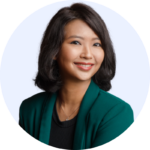Digital transformation changes the way you provide value to customers by integrating digital technology into every single area of your business.
In today’s fast-paced world, customer expectations are higher than ever, and the insurance industry is no exception. Simply put, clients are looking for personalised experiences that cater to their unique needs and preferences.
Furthermore, customers are more open to sharing their personal data in order to get cheaper insurance premiums, as a 2021 consumer survey showed.
To stay competitive and meet these demands, insurance companies must leverage technology to deliver seamless and efficient customer experiences. In this article, we’ll show how integrating cloud communications into insurance experiences can transform the industry by enhancing customer interaction, streamlining claim processing, and providing a seamless, personalised insurance journey like never before.
Let’s dive in!
Go omnichannel, but be strategic about it
Omnichannel communication is vital in delivering a consistent and unified customer experience across various platforms.
Insurance companies must prioritise offering multiple communication channels, including voice, video, chat, email, and social media, to cater to their clients’ preferences. This approach ensures customers can interact with their insurers using their desired channel, leading to a more satisfying experience.
However, if you open too many communication channels, you could be opening your insurance business to unnecessary risk (especially when the activity levels of these channels aren’t thoroughly understood).
With each added channel, new hurdles are presented.
We covered these challenges in greater detail in:
>> How Data-Enriched Communication Channels Can Deliver Empathy and Efficiency at Scale
All this means that a robust strategy is necessary to ensure the quality of customer interactions doesn’t dilute.
Before onboarding a new communication channel, companies must conduct a comprehensive evaluation of its coverage and daily usage, comparing it with existing options. This aids in understanding if the new channel truly offers value or just contributes to the clutter.
Bottom-line: The addition of communication channels should always be driven by a strategy that prioritises the real demands of customers, and issue resolution.
Leveraging proprietary apps for sharing confidential insurance information
When it comes to the sharing of sensitive insurance information, proprietary apps offer a significant edge over third-party platforms. These personalised applications provide an unparalleled level of data security, ensuring that client confidentiality is maintained, and the risk of data breaches is kept to a minimum.
In addition to bolstering security, proprietary apps provide a seamless customer experience. They act as a one-stop solution for clients’ insurance needs, offering convenience and peace of mind. By placing the clients’ privacy at the forefront, insurance providers enhance trust and service value, thereby shaping a beneficial digital communication strategy for all stakeholders.
Embed in-app calling capabilities
Some health insurance companies offer a dedicated team of doctors and nurses, available for customers to call or message via the insurer’s app.
By adding in-app voice calling capabilities, insurers can let customers effortlessly connect with the medical professionals directly. This enhances the customer’s experience by providing a simple, convenient, and efficient way to communicate with healthcare professionals, ensuring customers receive the best possible support and care.
Beyond healthcare insurance, embedding calls inside any kind of insurance app would allow communications with customers to be easier, more trackable, and more trustworthy.
How it benefits insurance agents: Sales agents, equipped with the insurer’s app capabilities, can proactively engage with customers, all while maintaining an ongoing record of the interactions.
Furthermore, by reaching out directly to customers through the secured proprietary app, customers are reassured they are interacting with legitimate agents – not scammers. This creates a more reliable, trustworthy insurance experience that can significantly increase the pickup rate for add-on offerings and improve cross-selling and upselling opportunities.
Personalise insurance offerings based on in-app data insights
Imagine a customer on a trip, using an insurance company’s app to make a claim. As they make a call through the app, crucial details such as the customer’s current whereabouts are collected and made available to the support agent.
Why it matters: With this additional context, the agent can provide more tailored assistance and offer relevant products. Furthermore, the app’s notification feature allows the agent to send timely alerts regarding other insurance options, enhancing the customer’s overall experience.
Streamline insurance authentications
Managing online fraud and ensuring user authenticity are critical concerns for any insurer today.
With increasingly sophisticated cyber threats, user verification methods must be both robust and user-friendly. An insurer can greatly streamline their authentication process by leveraging voice and messaging user verification solutions in the following ways:
- Message Verification: Dispatch one-time passwords (OTPs) via SMS for a reliable, tried-and-tested verification process.
- Voice Verification: Deliver OTPs through text-to-speech calls, leveraging high-quality voice connectivity and local number availability in the APAC region.
- Ping Verification: Offer a frictionless authentication experience by verifying Android users without the need for a code or password.
Reduce policy renewal risk with AI
Every time a customer has a bad experience with an insurer, the risk of them not renewing the policy increases. This is especially common in auto insurance.
However, insurers can leverage the power of data and pair it with AI to proactively reduce renewal risk.
Here’s how: Consider an auto insurance customer, Angela, who has been a long-time policyholder with her provider. Following an unpleasant claim experience in the previous year, she’s now exploring other options. By leveraging data on customer behaviour related to policy renewals, the insurer can use AI-based techniques to predict if and when Angela is most likely to switch providers.
Armed with this context, they can automatically offer her a better deal in a notification or reminder SMS.
This message can
- acknowledge the difficulty faced with the previous claim,
- assign a dedicated account manager with a direct phone number for future enquiries,
- Embed an early renewal discount.
Conclusion
In conclusion, the integration of technology in the insurance industry is truly transformative. By leveraging personalisation strategies, utilising embedded communication features, and harnessing the power of data and AI, insurers can offer unprecedented levels of service.
This not only strengthens trust and provides convenience, but it also facilitates a more meaningful and satisfying customer experience, setting the stage for the future of insurance.
 V K Sanjeed
V K Sanjeed 


 Ana Castrillon
Ana Castrillon 
 Nora Huin
Nora Huin 